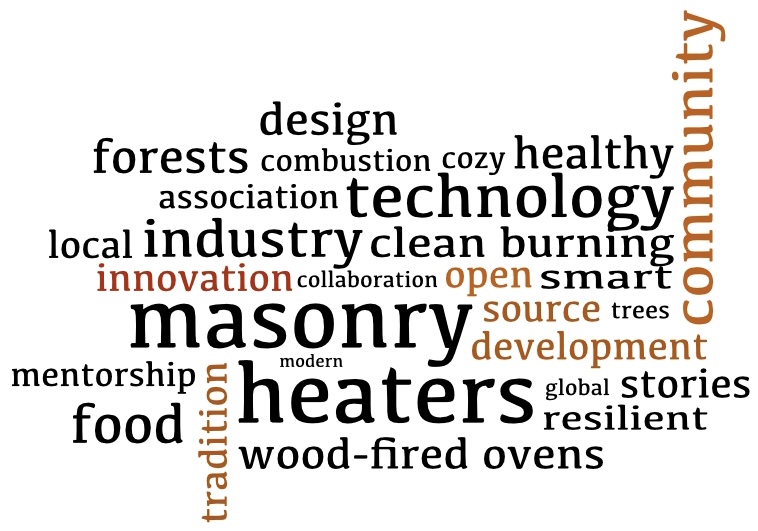
Background
Masonry heaters are ripe fruit for open source development. Firewood as a fuel is widely available. It’s supply is not powerfully consolidated like that of electricity, propane and other petroleum products. The mass part of masonry heaters makes centralized industrial production and far-flung shipping of the units challenging. The assembly of the mass to form the intricate inner workings of masonry stoves almost always requires an artisan presence, even when a kit or manufactured unit is involved. It is unlikely that a large corporation could consolidate or centralize production to any great extent, partly because masonry heaters are based on simple natural principles and are fairly easily reverse-engineered. You generally can’t buy one on Amazon and have it delivered tomorrow. It makes sense to have local builders with relationships with their customers, who can also provide support and maintenance. Heater builders need access to designs that they can apply to their own work and they need forums in which to provide feedback, show iterations, and add innovation.
Progress is made painfully slowly by isolated individuals and small artisan companies each having to invent and build the wheel themselves. To the extent that each can make contributions to the overall body of knowledge and benefit from the shared resources that result, it might be possible to gather more momentum for this interesting and resilient technology.
Examples of Open Source Heater Projects
The Masonry Heater Association
The Masonry Heater Association (MHA) is an association of masonry heater builders, primarily from North America, who have united around the masonry heating cause since the early 1980’s. It has been an important gathering point for those professionally interested in masonry heaters. An open-source ethos has been an important and inspiring part of its existence. Because competition amongst professionals is relatively low due to the relatively low number of overall heater builders and wide geographical distribution, there has been a tremendous amount of generosity in the exchange of information and experience.
The Masonry Heater Association and the MHA Forums has been the primary support for our own development here at Firespeaking. The quality of discussion on the forums is extremely high because most people contributing are active professionals in the field. While the forums rarely see the publication of specific designs, the anecdotal discussion of experience and techniques is illuminating and provides general design reference.
The MHA is an interesting example because there is a pay-barrier in the form of an annual membership fee. While paying dues is required to participate in the forums and/or attend the annual meeting, the MHA has actively publicly published its workshops which are presentations of its members work and research. Founding member Norbert Senf deserves accolades for this dedicated and prolific archive. One good jumping off point into this resource is the MHA Projects Page. The MHA News used to be an important open-source reference for heater building activity (until it effectively forked into a Facebook version) and serves as a maze of important links to heater and oven designs.
The Batch Rocket Initiative
Peter van den Berg’s publication at batchrocket.eu is one of the best examples of open source publication on a specific design of heater. The batch rocket’ development is essentially a fork on the Rocket Mass Heater (RMH) design. Those attracted to the intriguingly clean-burning nature of the RMH were interested in how this technology could be applied to a firebox that had a door for better fuel management and could burn more fuel at once. The firebox size is honed for a medium-small fuel load. Communication for the batch rocket’s development happened primarily in the Rocket Stoves Pro Boards forum.
After building examples, improving on them, and communicating with others who were working on and had built similar designs, Peter published a nicely synthesized summary of the design. He published it in a way that is freely accessible, under a Creative Commons Attribution-ShareAlike license. including giving credit for origins of the design where credit was due. Because anyone on the internet can access it for free and because of its clear presentation, the “batch rocket” is already showing its traction internationally and will likely continue to be iterated upon and developed.
The Cabin Stove Project
The Cabin Stove Project is one we embarked on at here at Firespeaking. The Cabin Stove is basically a hybrid of a cook stove and a masonry heater. If you look at the main project page, we have tried to do a good job of documenting the project. This includes instances of actual installations (including The Shop Cabin Stove which we use to heat our shop), a project map to explain its development, a design history with references to precedents and other similar efforts.
Our efforts slowed some years ago as we began to realize that it was of no utility to offer plans if there was not a readily-available and affordable source of supply for the hardware (firebox doors, cooktops, ash doors, clean outs, etc.) that were used in the plans we produced. We were accustomed to doing metal fabrication to make the custom parts we wanted but didn’t think that this was scaleable because of the expense involved in custom fabrication. So we embarked on a several year project of becoming distributors of well-built, affordable hardware and now offer a full catalog of heater hardware.
We also had to develop a forum where people could engage with the material published, receive support in their own building process, and report back about their experience to further improve our designs. This is now implemented (using open-source software) at the Firespeaking Forums, where you can also engage in conversation on this topic and provide feedback on this article.
We are currently actively working on an outgrowth of this project which is the Cookstove + Masonry Heater Hybrid which leverages the stock hardware now available and also provides for more heat storage which we’ve realized is beneficial to make it to the next firing with an even ambient temperature.
Mechanisms of Open-Source Development
In 1997, Eric Raymond published an essay entitled “The Cathedral and the Bazaar: Musings on Linux and Open Source by an Accidental Revolutionary” which laid the conceptual framework for open source software development. It tells the story of how an obscure and freely available operating system could quickly develop in both technical strength and user engagement to outperform the corporately developed options of the time, namely Windows. He describes two very different approaches to design development. The “Cathedral” style is top-down and characterized by a large body of work created by a small group of people with infrequent major releases. The “Bazaar” style, on the other hand, is characterized by community involvement in which designs are released early and often, the process is delegated as much as possible, and creators and end-users engage together to assess issues and resolve them. Although the essay applies to software development, the principles have wide application, including for heater building.
In order for an open-source initiative to thrive, there must be a flow between creative original work and real-world application and feedback. A project thrives when their is support for it, both in terms of the formation of a community around the project as well as a flow of financial support for its continued development. Here is a list of vocabulary to potentially assist in the process.
Hosts
The project must be clearly defined and, in general, benefits from a central point of publication and an individual or group who are actively maintaining the project. There is a delicate balance between leadership and participation.
Forums
A forum for discussing the project is essential. This provides the active contributors a space to discuss and develop the project and allows for feedback and participation.
Repositories, References, Changelogs, Forks & Commits
These are technical terms borrowed from open-source software development that may be useful vocabulary:
- A repository refers to the location where a design is published and made available.
- References, or credits, are an important part of a project where previous projects are cited which contribute to the current project.
- A changelog is a documented list of changes made to versions of a design so participants can track what has changed since the last time they engaged.
- Commits refers to when details or new design proposals from the community are adapted and included in the main design.
- Forks happen when the body of an open-source project is developed upon in a signficantly enough different direction to consider it as a different project.
Licenses
A license defines the permission granted to use a design. Open-source licenses define how a design is allowed to be used, modified, and shared. Clauses may include definition about how a design may be re-posted, requirements for modifications that build upon a project to give credit to the original, and limits to whether design work can be re-published or re-sold. It would be nice to have a set of licenses specifically adapted to architectural design in general and heater design specifically. For now, the best resource we know of, and that we plan to use, are the Creative Commons group of licenses.
Liability
One thing that has limited the publication of masonry heater designs is concern about liability. Our thought is that the limits on liability be clearly stated any place where drawings are available. It should be agreed to that design drawings are conceptual guides and that it is the responsibility of the individuals executing the design to have done their research and to vouch for the safety of their project. The standard disclaimer to “Follow the codes of the local building authority†can be applied.
Funding & Support
“Open-source” does not necessarily mean “free”. It does generally refer to access to the raw material of a design and not just its polished result. There is often a price to pay to the project’s developers in order to support the project and to gain access to updates as the project evolves.
The Path Forward
I have wanted to write this article for some time to express a potential direction that heater building can take. When the questions of climate change and ecology are posed and our dependence on petroleum is identified, there are often few real solutions available. Because of their potential as beautiful, efficient and clean-burning appliances for home-heating and cooking which use a renewable local source of fuel, masonry heaters should – and may need to – thrive as a technology. In order to make this a reality, there is much work to be done. This article hopes to provide some light on the potential and mechanisms for collaboration going forward.

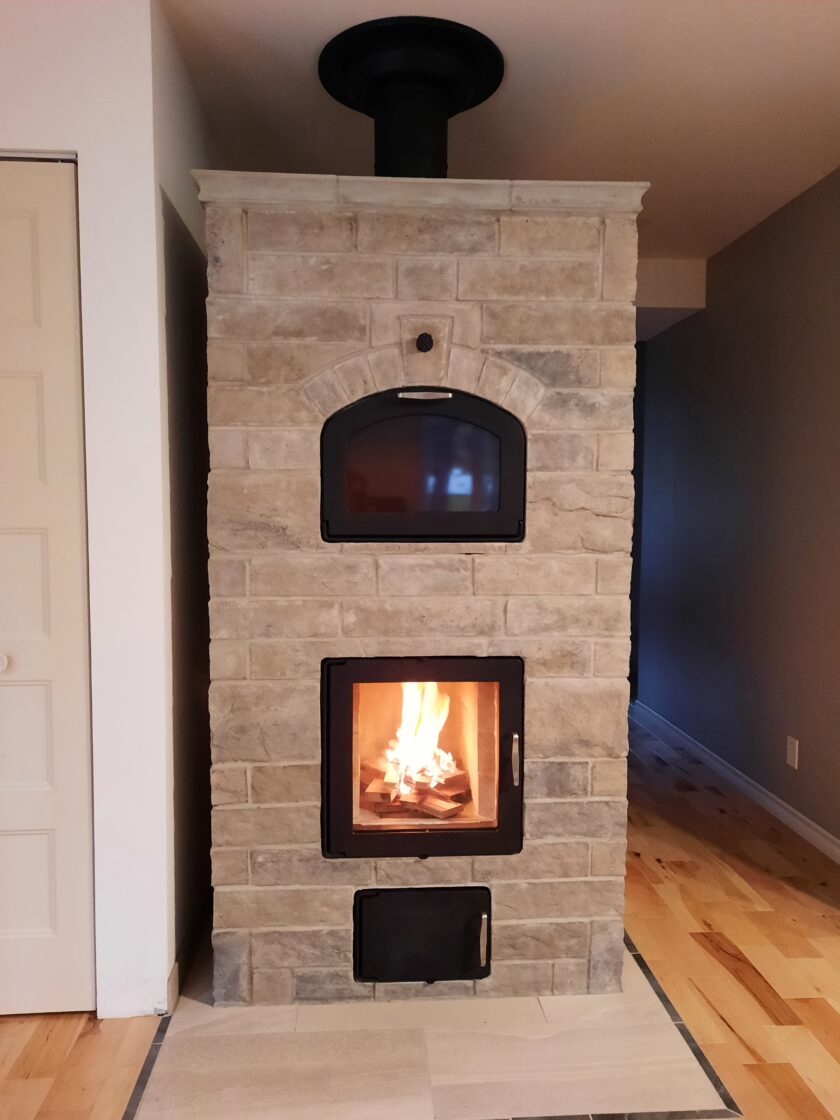
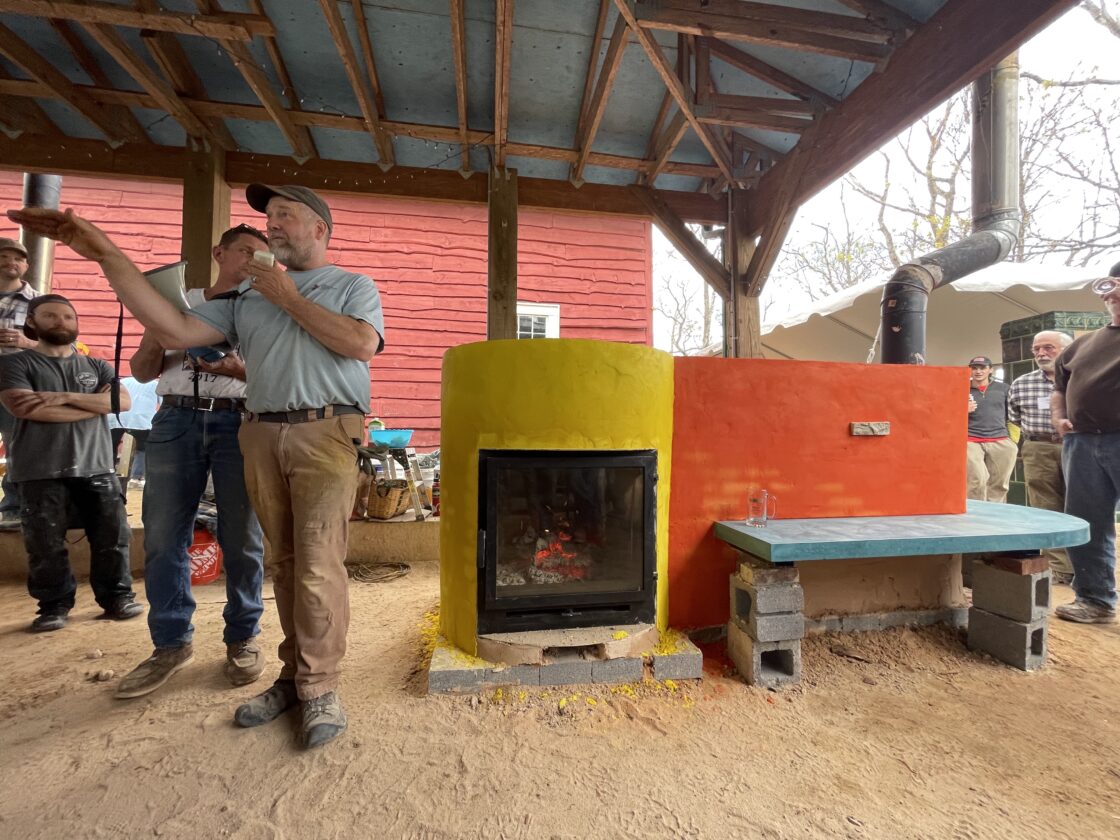
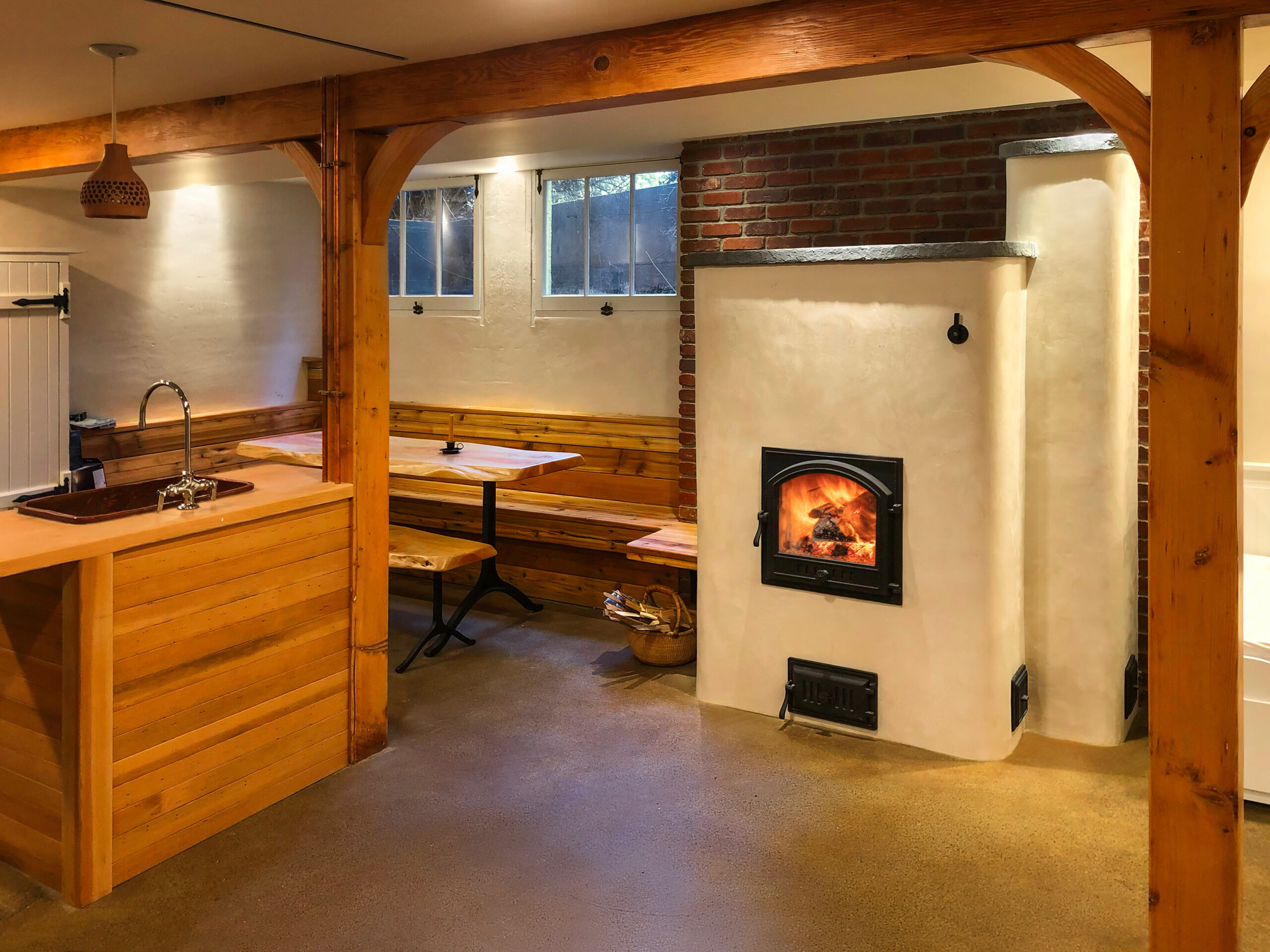
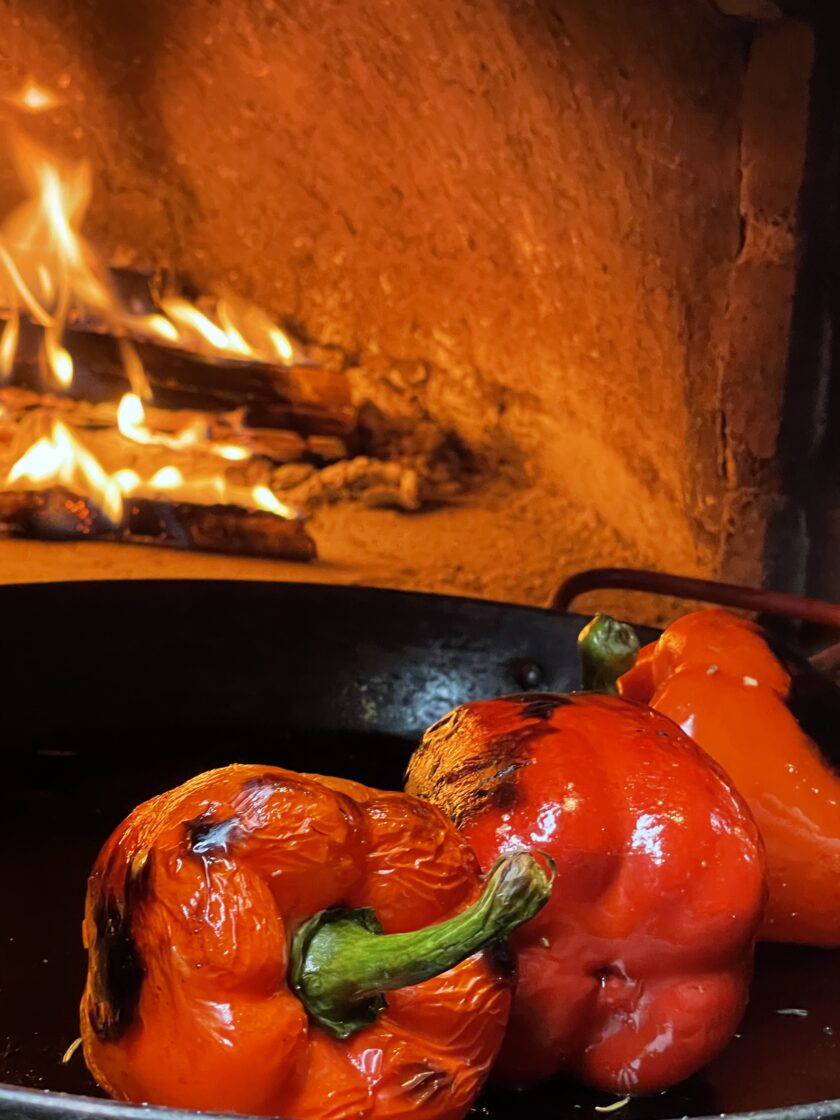
Capitalizing on ideas has always been an impediment to progress on a tribal level. Capitalizing on skill has produced the greatest works of art and science known to the world. For example, few people realize that the vast majority of the server infrastructure on the WWW is all free (as in free beer) open source, Linux based software (Apache Servers). The capacity to build and manage the service is how the software gains credibility and support. Every major software corporation (IBM, CISCO etc.) contributes to the development of open source server software. It is the skill to develop and manage the software that supports its advocates. That is how the Linux Foundation came into being.